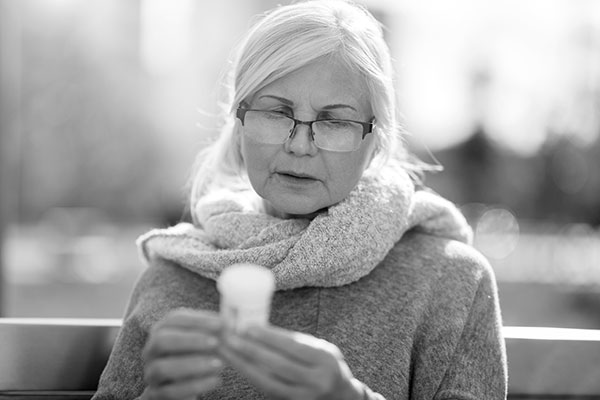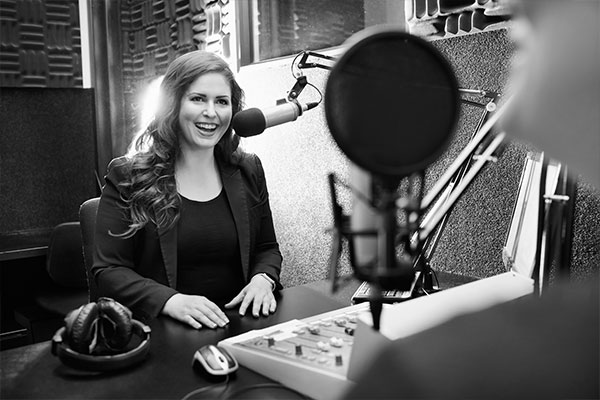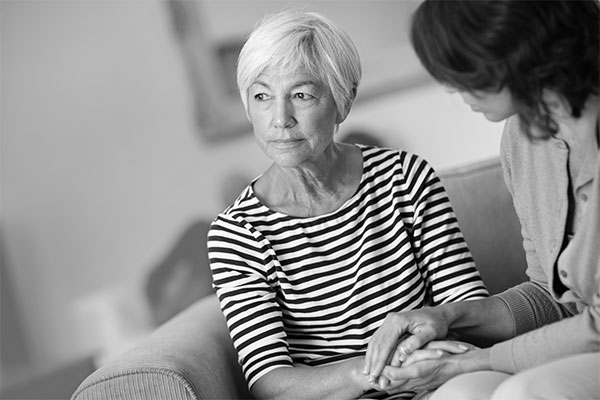Seasonal Affective Disorder (SAD)

Some people suffer from symptoms of depression during the winter months, with symptoms subsiding during the spring and summer months. These symptoms may be a sign of seasonal affective disorder (SAD). SAD is a mood disorder associated with depression and related to seasonal variations of light. SAD affects half a million people every winter between September and April, peaking in December, January, and February. The “Winter Blues,” a milder form of SAD, may affect even more people.
Prevalence
- Three out of four SAD sufferers are women.
- The main age of onset of SAD is between 18 and 30 years of age.
- SAD occurs in both the northern and southern hemispheres, but is extremely rare in those living within 30 degrees latitude of the equator.
- The severity of SAD depends both on a person’s vulnerability to the disorder and his or her geographical location.
Symptoms
Seasonal affective disorder is a cyclic, seasonal condition. This means that signs and symptoms come back and go away at the same time every year. Usually, seasonal affective disorder symptoms appear during late fall or early winter and go away during the sunnier days of spring and summer. Some people have the opposite pattern and become depressed with the onset of spring or summer. In either case, problems may start out mild and become more severe as the season progresses.
Fall and winter seasonal affective disorder (winter depression)
Winter-onset seasonal affective disorder symptoms include:
- Depression
- Hopelessness
- Anxiety
- Loss of energy
- Social withdrawal
- Oversleeping
- Loss of interest in activities you once enjoyed
- Appetite changes, especially a craving for foods high in carbohydrates
- Weight gain
- Difficulty concentrating and processing information
Spring and summer seasonal affective disorder (summer depression)
Summer-onset seasonal affective disorder symptoms include:
- Anxiety
- Trouble sleeping (insomnia)
- Irritability
- Agitation
- Weight loss
- Poor appetite
- Increased sex drive
Reverse seasonal affective disorder
In some people, spring and summer can bring on symptoms of mania or a less intense form of mania (hypomania). These can include elevated mood, agitation, and rapid thoughts and speech. Reverse seasonal affective disorder is a form of bipolar disorder.
Signs and symptoms of reverse seasonal affective disorder include:
- Persistently elevated mood
- Increased social activity
- Hyperactivity
- Unbridled enthusiasm out of proportion to the situation
When to see a doctor
It's normal to have some days when you feel down. But if you feel down for days at a time and you can't seem to get motivated to do activities you normally enjoy, see your doctor. This is particularly important if you notice that your sleep patterns and appetite have changed or if you feel hopeless, think about suicide, or find yourself turning to alcohol for comfort or relaxation.
Causes
The specific cause of seasonal affective disorder remains unknown. It's likely, as with many mental health conditions, that genetics, age and, perhaps most importantly, your body's natural chemical makeup all play a role in developing the condition. A few specific factors that may come into play include:
- Your biological clock (circadian rhythm). The reduced level of sunlight in fall and winter may disrupt your body's internal clock, which lets you know when you should sleep or be awake. This disruption of your circadian rhythm may lead to feelings of depression.
- Melatonin levels. The change in season can disrupt the balance of the natural hormone melatonin, which plays a role in sleep patterns and mood. Talk to your doctor to see whether taking melatonin supplements is a good option.
- Serotonin levels. A drop in serotonin, a brain chemical (neurotransmitter) that affects mood, might play a role in seasonal affective disorder. Reduced sunlight can cause a drop in serotonin, perhaps leading to depression.
Risk Factors
Factors that may increase your risk of seasonal affective disorder include:
- Being female. Some studies show that seasonal affective disorder is diagnosed more often in women than in men, but that men may have more-severe symptoms.
- Living far from the equator. Seasonal affective disorder appears to be more common among people who live far north or south of the equator. This may be due to decreased sunlight during the winter, and the longer days of summer.
- Family history. As with other types of depression, some studies have shown that people with seasonal affective disorder are more likely to have blood relatives with the condition.
Complications
Take signs and symptoms of seasonal affective disorder seriously. As with other types of depression, seasonal affective disorder can worsen and lead to problems if it's not treated. These can include:
- Suicidal thoughts or behavior
- Social withdrawal
- School or work problems
- Substance abuse
Treatment can help prevent complications, especially if seasonal affective disorder is diagnosed and treated before symptoms get bad.
Preparing for your appointment
You're likely to start by first seeing your family doctor or a general practitioner. Or, you may start by seeing a mental health provider such as a psychiatrist or psychologist.
Because appointments can be brief, and because there's often a lot of ground to cover, it's a good idea to be well prepared for your appointment. Here's some information to help you get ready for your appointment, and what to expect from your doctor.
What you can do:
- Record your symptoms so that you can tell your doctor or mental health provider exactly what they are (feeling down or lack of energy, for example).
- Write information about your depression patterns, such as when your depression starts and what seems to make it better or worse.
- Make a note of any other mental or physical health problems you have, as both can affect mood.
- Write down any major stressors or life changes you've had recently.
- Make a list of all medications, as well as any vitamins or supplements, that you're taking.
- Write down questions to ask your doctor.
Your time with your doctor is limited, so preparing a list of questions ahead of time will help you make the most of your time together. List your questions from most important to least important in case time runs out. For seasonal affective disorder, some basic questions to ask your doctor include:
- Are my symptoms most likely caused by seasonal affective disorder?
- What else could be causing or worsening my symptoms of depression?
- What are the best treatment options?
- Are there any restrictions that I need to follow or steps I should take to help improve my mood?
- Should I see a psychiatrist, psychologist or other mental health provider? What will that cost, and will my insurance cover seeing a specialist?
- Is there a generic alternative to the medicine you're prescribing me?
- Are there any brochures or other printed material that I can take home with me? What Web sites do you recommend visiting?
In addition to the questions that you've prepared to ask your doctor, don't hesitate to ask questions during your appointment at any time that you don't understand something.
What to expect from your doctor
Your doctor is likely to ask you a number of questions. Being ready to answer them may reserve time to go over any points you want to spend more time on. Your doctor may ask:
- What are your symptoms?
- When did you first begin having symptoms?
- Have your symptoms been continuous or occasional?
- How severe are your symptoms?
- What, if anything, seems to improve your symptoms?
- What, if anything, appears to worsen your symptoms?
- Do you have any other physical or mental health conditions?
- Are you taking any herbal remedies or medications?
- Do you use alcohol or drugs?
- Do any of your blood relatives have seasonal affective disorder or another mental health condition?
Your doctor may also ask more-detailed questions depending on your individual situation.
Tests and Diagnosis
To help diagnose seasonal affective disorder, your doctor or mental health provider will do a thorough evaluation, which generally includes:
- Detailed questions. Your doctor or mental health provider may ask about your mood, seasonal changes in your thoughts and behavior, your lifestyle and social situation, and sleeping and eating patterns, for example. You may also fill out psychological questionnaires.
- Physical exam. Your doctor or mental health provider may do a physical examination to check for any underlying physical issues that could be linked to your depression.
- Medical tests. There's no medical test for seasonal affective disorder, but if your doctor suspects a physical condition may be causing or worsening your depression, you may need blood tests or other tests to rule out an underlying problem.
Seasonal affective disorder is considered a subtype of depression or bipolar disorder. Even with a thorough evaluation, it can sometimes be difficult for your doctor or mental health provider to diagnose seasonal affective disorder because other types of depression or mental health conditions may mimic seasonal affective disorder.
To be diagnosed with seasonal affective disorder, you must meet criteria spelled out in the Diagnostic and Statistical Manual of Mental Disorders (DSM). This manual is published by the American Psychiatric Association and is used by mental health professionals to diagnose mental conditions and by insurance companies to reimburse for treatment.
The following criteria must be met for a diagnosis of seasonal affective disorder:
- You've experienced depression and other symptoms for at least two consecutive years, during the same season every year.
- The periods of depression have been followed by periods without depression.
- There are no other explanations for the changes in your mood or behavior.
Treatments for Seasonal Affective Disorder
Treatment for seasonal affective disorder may include light therapy, medications and psychotherapy.
Light therapy
In light therapy, also called phototherapy, you sit a few feet from a specialized light therapy box so that you're exposed to bright light. Light therapy mimics outdoor light and appears to cause a change in brain chemicals linked to mood. This treatment is easy to use and seems to have few side effects.
Although light therapy is widely used and appears to be helpful, it isn't clear how light therapy works and how effective it is in treating seasonal affective disorder. Before you purchase a light therapy box or consider light therapy, talk to your doctor or mental health provider to make sure it's a good idea and to make sure you're getting a high-quality light therapy box.
Medications
Some people with seasonal affective disorder benefit from treatment with antidepressants, especially if symptoms are severe. Medications commonly used to treat seasonal affective disorder include:
- Bupropion. An extended-release version of the antidepressant bupropion (Wellbutrin XL) may help prevent depressive episodes in people with a history of seasonal affective disorder.
- Other antidepressants. Antidepressants commonly used to treat seasonal affective disorder include paroxetine (Paxil), sertraline (Zoloft), fluoxetine (Prozac, Sarafem) and venlafaxine (Effexor).
Your doctor may recommend starting treatment with an antidepressant before your symptoms typically begin each year. He or she may also recommend that you continue to take antidepressant medication beyond the time your symptoms normally go away.
Keep in mind that it may take several weeks to notice full benefits from an antidepressant. In addition, you may have to try several different medications before you find one that works well for you and has the fewest side effects.
Psychotherapy
Psychotherapy is another option to treat seasonal affective disorder. Although seasonal affective disorder is thought to be related to biochemical processes, your mood and behavior also can add to symptoms. Psychotherapy can help you identify and change negative thoughts and behaviors that may be making you feel worse. You can also learn healthy ways to cope with seasonal affective disorder and manage stress.
Lifestyle
Especially if your seasonal depression symptoms are severe, you may need medications, light therapy or other treatments to manage seasonal affective disorder. However, there are some measures you can do on your own that may help, such as:
- Make your environment sunnier and brighter. Open blinds, add skylights and trim tree branches that block sunlight. Sit closer to bright windows while at home or in the office.
- Get outside. Take a long walk, eat lunch at a nearby park, or simply sit on a bench and soak up the sun. Even on cold or cloudy days, outdoor light can help — especially if you spend some time outside within two hours of getting up in the morning.
- Exercise regularly. Physical exercise helps relieve stress and anxiety, both of which can increase seasonal affective disorder symptoms. Being more fit can make you feel better about yourself, too, which can lift your mood.
Sources:
The Harvard Mental Health Letter - February 1993.
Mayo Clinic website www.mayoclinic.com


























